The booby is a seabird that is found in tropical and subtropical waters throughout the world. Boobies are part of the Sulidae family of seabirds, which includes gannets and cormorants.
They are known for their graceful flight, their large size and their distinctive bright colors. Boobies are known to nest in large colonies, often alongside other seabirds. They feed on fish, squid and other small sea creatures, diving into the water to catch their prey.
Boobies have a wide range of behaviors, from cooperative feeding and nesting to aggressive courtship and territorial displays.
1. Blue-Footed Booby
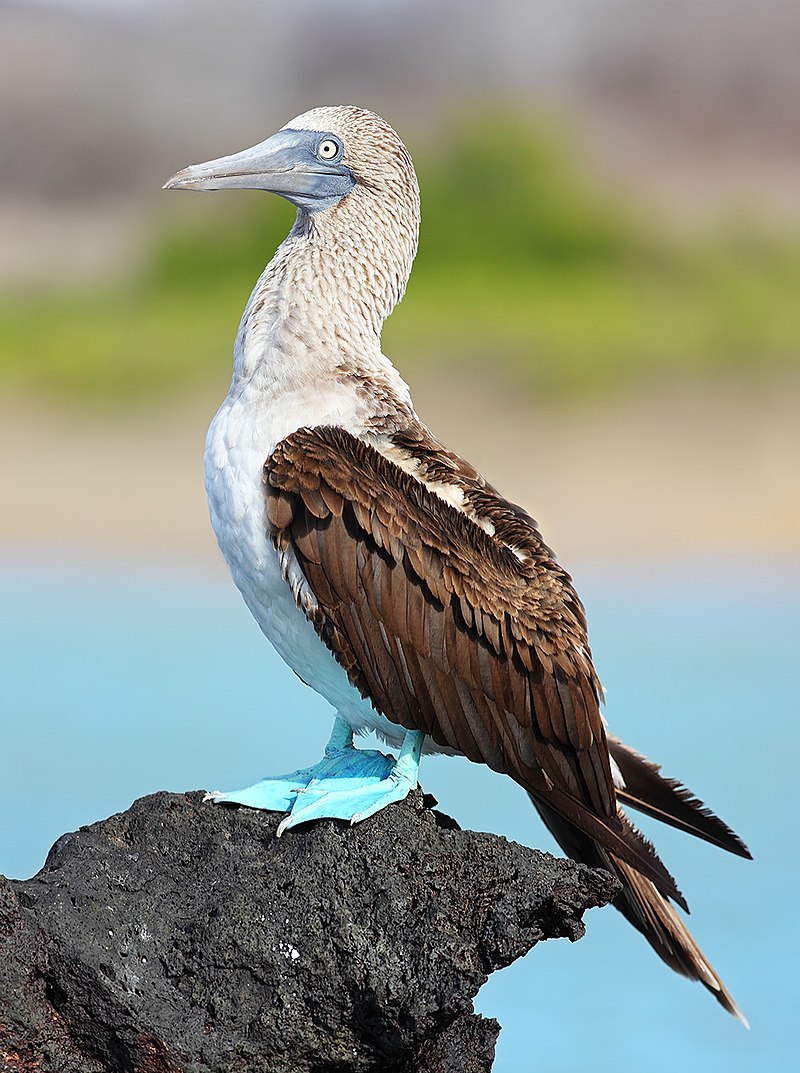
The blue-footed booby is a marine bird that can be found in subtropical and tropical parts of the eastern Pacific Ocean.
It’s one of six species from the same genus, with its unique bright blue feet being a product of their diet as well as an attractive mating ritual for males.
During this ritual, they lift up their feet to show off their brilliant colouring to potential mates.
Boobies are excellent divers, using these skills primarily to hunt fish and squid close by reefs or open ocean waters – plunging into the sea from heights between 10–30 metres.
They also feed on smaller prey such as crustaceans which float near the surface.
Their wingspan averages 1 metre across, making them graceful flyers over large distances both on land and above water surfaces alike.Scientific classification:
| Kingdom | Animalia |
| Phylum | Chordata |
| Class | Aves |
| Order | Suliformes |
| Family | Sulidae |
| Genus | Sula |
| Species | S. nebouxii |
2. Red-Footed Booby
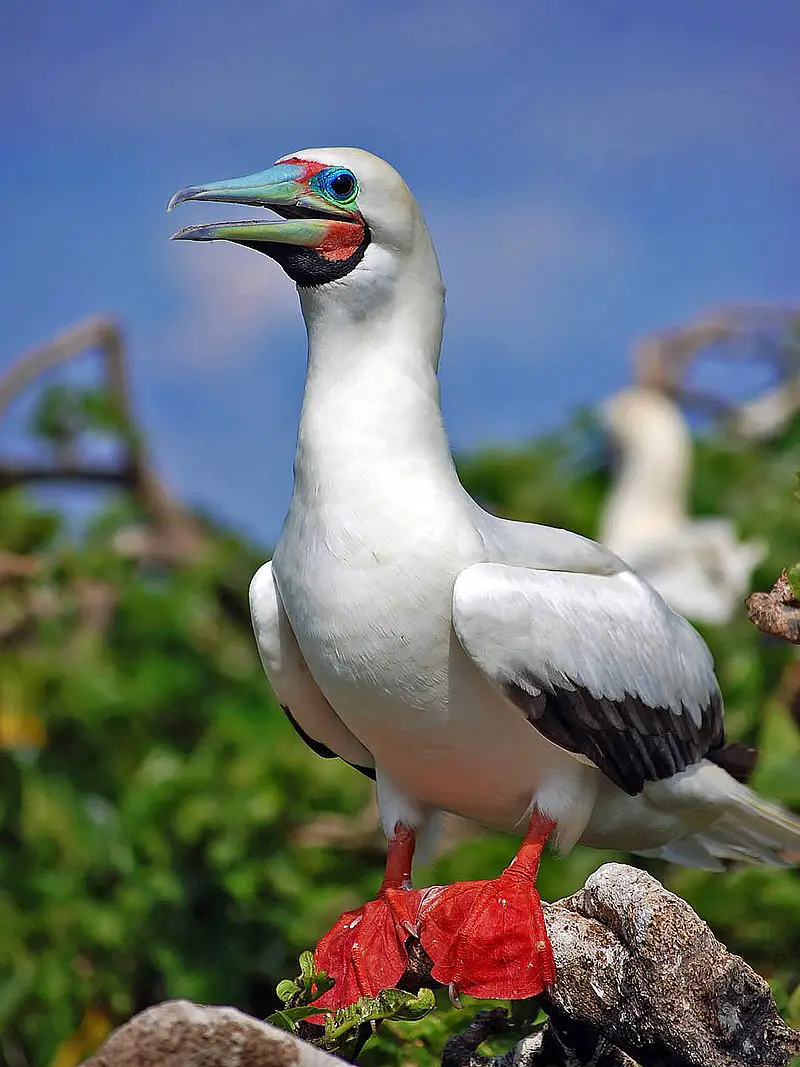
The Red-footed Booby is a large seabird of the Sulidae family, easily distinguished by its bright red feet. These birds are strong and agile fliers but can be clumsy in takeoffs and landings.
They live mostly in tropical areas and breed colonially on coastal islands all over the world.
The species faces few threats from either nature or humans, however their population has decreased slightly due to disturbances near breeding sites.
Despite this mild decline, they remain an incredibly common sight across many parts of the tropics – so much so that they have become symbolic with island life.Scientific classification:
| Kingdom | Animalia |
| Phylum | Chordata |
| Class | Aves |
| Order | Suliformes |
| Family | Sulidae |
| Genus | Sula |
| Species | S. sula |
3. Brown Booby
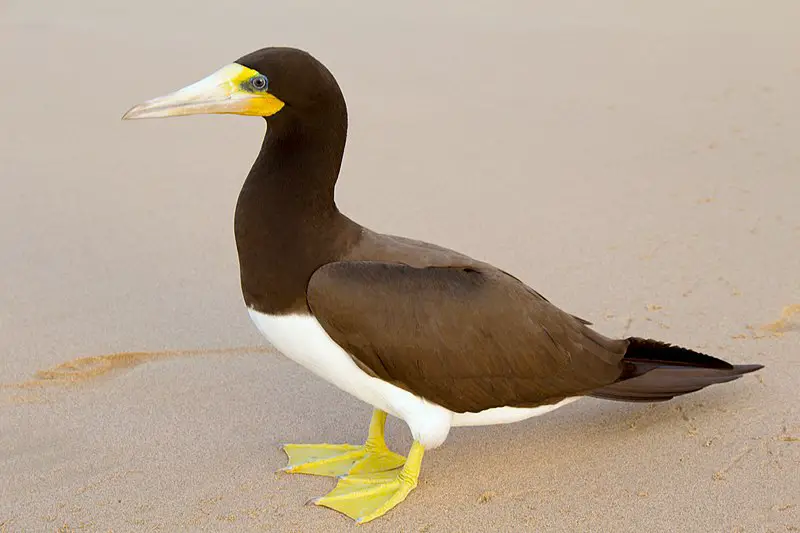
The Brown Booby is a large, seabird from the booby family Sulidae. It has a pantropical range and can be found in many areas of the world.
This bird lives in flocks and forages by plunging into shallow waters to catch small fish that are driven near the surface by predators or storms.
The brown booby is known for its short wings which make it highly maneuverable when hunting; this allows it to pursue prey quickly with sudden turns and dives.
Its diet also includes squid, crustaceans, eggs of other birds, as well as scraps from boats or ships they may come across while flying around coastlines.
They sometimes rest on floating objects during their long flights over open water between islands or continents.Scientific classification:
| Kingdom | Animalia |
| Phylum | Chordata |
| Class | Aves |
| Order | Suliformes |
| Family | Sulidae |
| Genus | Sula |
| Species | S. leucogaster |
4. Masked Booby
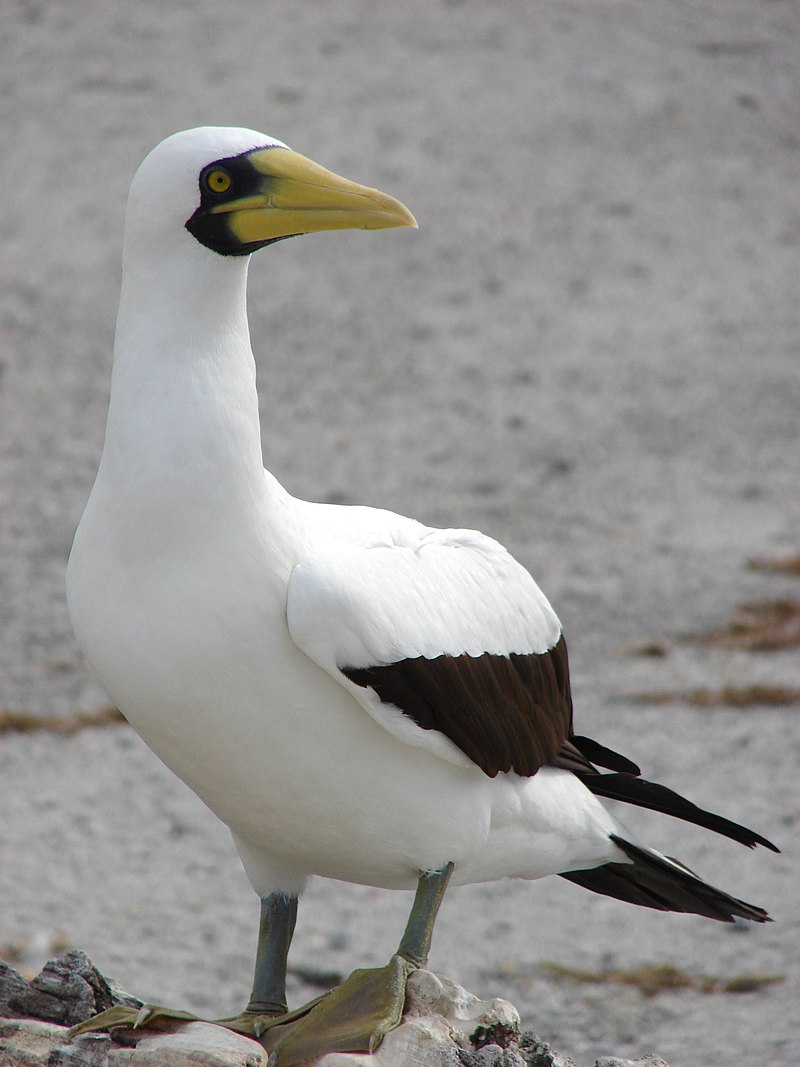
The Masked Booby is a large seabird belonging to the booby and gannet family. It was first described by French naturalist René-Primevère Lesson in 1831, making it one of six species of boobies within its genus Sula.
It has an impressive aerodynamic body shape with pale grey or white plumage on its head and neck, while the rest of its body is blackish brown.
Its wingspan can reach up to 1 metre wide. The bill is yellowish and pointed at the end, whilst they have bright blue skin around their eyes – this is why they are also known as ‘blue-faced’ boobies.
They use their strong wings for soaring over oceans in search of fish which makes them excellent fishers who feed mainly on flying fish near tropical waters but can occasionally be found off coasts in temperate regions too.Scientific classification:
| Kingdom | Animalia |
| Phylum | Chordata |
| Class | Aves |
| Order | Suliformes |
| Family | Sulidae |
| Genus | Sula |
| Species | S. dactylatra |
5. Northern Gannet
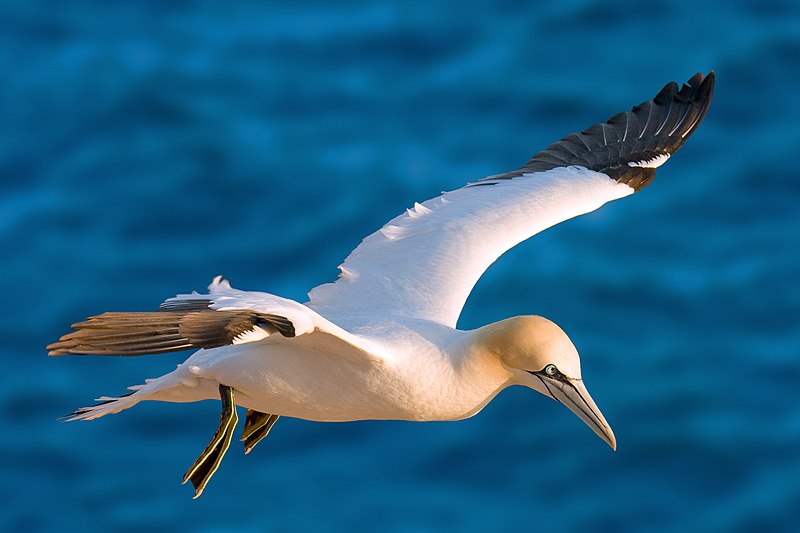
The Northern Gannet is the largest species of seabird in the northern Atlantic, with a white body and long neck.
It has yellowish head feathers and black tipped wings that can reach up to 6 feet across when fully extended.
The beak is large and orange-yellow in color. This bird breeds along western Europe’s coasts as well as northeastern North America.
They forage for fish by plunging into the sea from high above, making them an impressive sight to behold on any given day.
Their diet consists mainly of herring, mackerels or sand eels which they catch midair after diving at speeds reaching over 100 miles per hour.
With their striking features these birds are truly majestic creatures that have been around since prehistoric times – a testament to their hardiness and adaptability.Scientific classification:
| Kingdom | Animalia |
| Phylum | Chordata |
| Class | Aves |
| Order | Suliformes |
| Family | Sulidae |
| Genus | Morus |
| Species | M. bassanus |
6. Nazca Booby
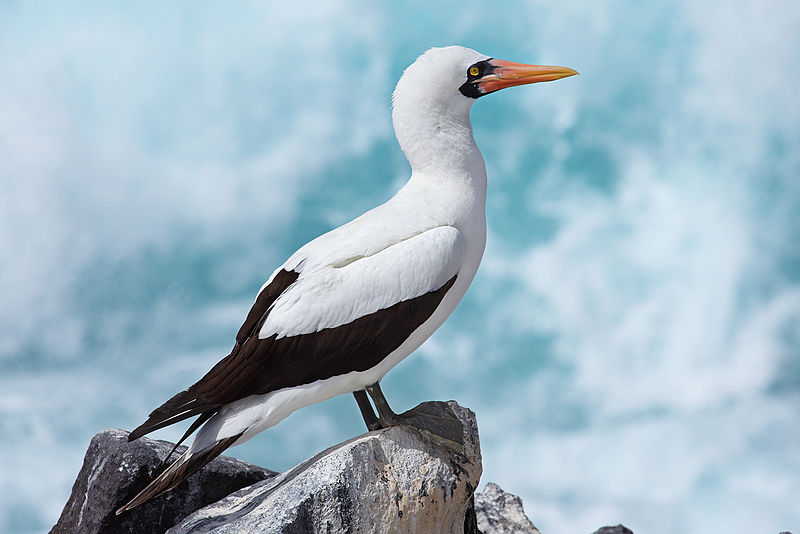
The Nazca booby is a large seabird of the Sulidae family native to the eastern Pacific.
With its long orange-yellow bill and aerodynamic body, it was first described by Walter Rothschild in 1902 and was then considered a subspecies of masked booby until 2002 when genetic differences were noticed.
It has a typical sulid shape with an elongated neck, long wings for faster flight and webbed feet for strong swimming ability.
They feed on squid and small fishes which they catch while flying over the ocean surface or diving from heights up to 30m deep into waters.
During breeding season males perform elaborate courtship displays like sky pointing calls, head nodding ritual dance as well as puffed out chest feathers showcasing their bright colors.Scientific classification:
| Kingdom | Animalia |
| Phylum | Chordata |
| Class | Aves |
| Order | Suliformes |
| Family | Sulidae |
| Genus | Sula |
| Species | S. granti |
Also Featured In: Birds You’ll Find in the Sea, Galapagos Birds You Should Know
7. Peruvian Booby
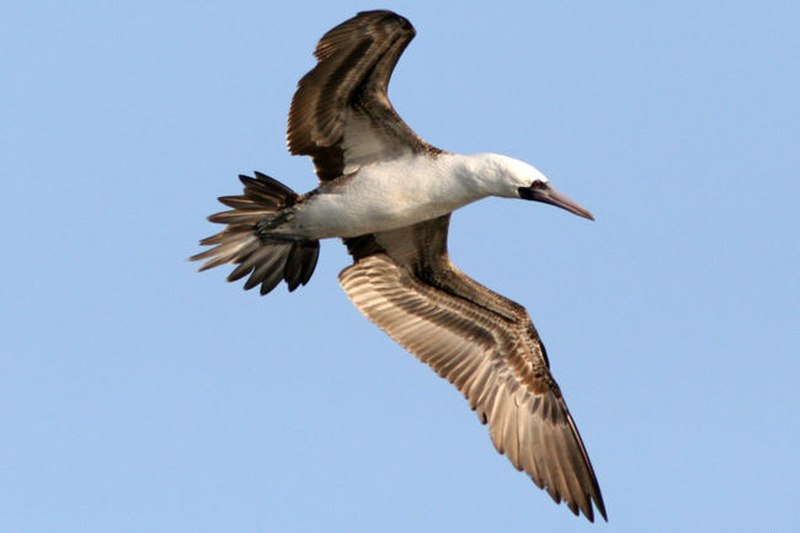
The Peruvian booby is an endemic bird of the Peruvian current and a top predator in its marine habitat.
It has less widespread distribution than other related species, yet it’s still the most abundant seabird along the coast.
The second biggest contributor to guano production, it was heavily hunted during mid-twentieth century for their feathers used in millinery products.
But conservation efforts have been successful and today they are listed as a near threatened species by IUCN Red List.
Its diet consists mostly of small fish which helps keep populations balanced within this fragile ecosystem.Scientific classification:
| Kingdom | Animalia |
| Phylum | Chordata |
| Class | Aves |
| Order | Suliformes |
| Family | Sulidae |
| Genus | Sula |
| Species | S. variegata |
8. Abbott’s Booby
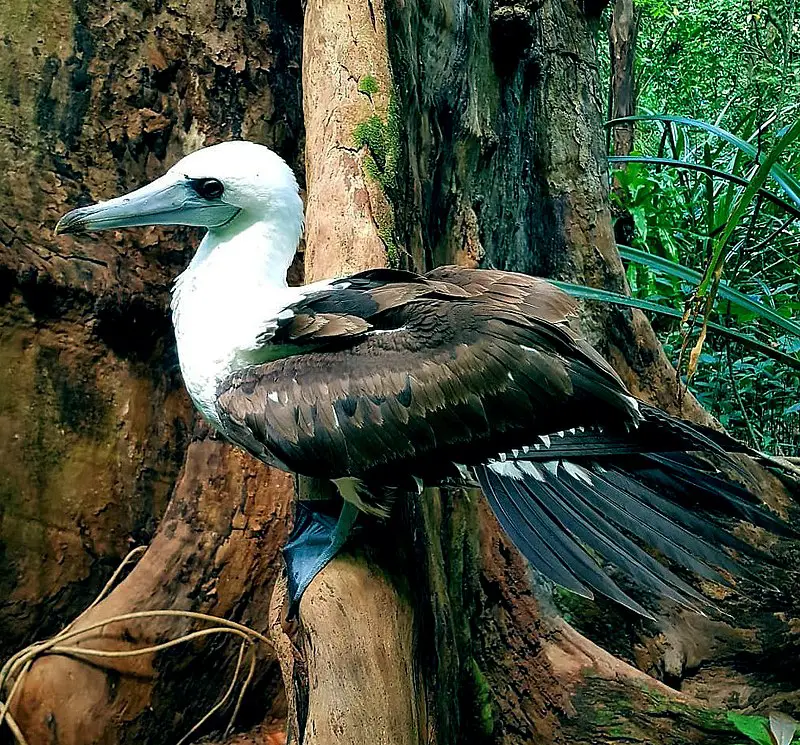
Abbott’s booby is an endangered seabird of the sulid family, found only in a few locations on Christmas Island.
This large bird was first discovered by William Louis Abbott during his journey to Assumption Island in 1892.
It has its own monotypic genus and can grow up to 70 cm long with wingspans reaching over one metre wide.
The species primarily feed on small fish from the surface or depths of the ocean and nest near cliffs where they build their nests using sticks, feathers and other natural materials.
Despite being listed as Endangered due to human interference such as habitat destruction, conservationists are working hard towards protecting this unique species so that future generations may be able enjoy it for years to come.Scientific classification:
| Kingdom | Animalia |
| Phylum | Chordata |
| Class | Aves |
| Order | Suliformes |
| Family | Sulidae |
| Genus | Papasula Olson & Warheit, 1988 |
| Species | P. abbotti |
9. Australasian Gannet
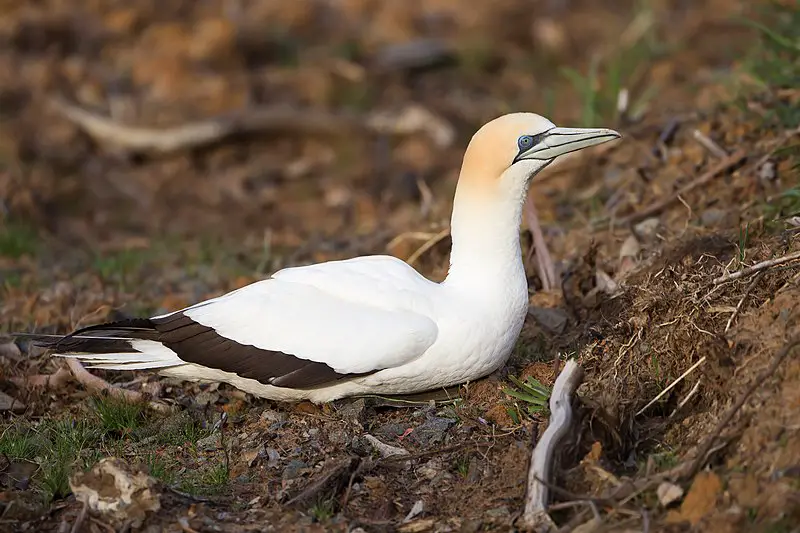
The Australasian gannet is a beautiful seabird with white feathers and black flight feathers that line its wings. Its head has a buff-yellow hue, with blue-grey bill edged in black and bright blue eyes.
It belongs to the booby and gannet family of Sulidae birds. This bird can be found off the coasts of Australia and New Zealand as well as other nearby islands including Lord Howe Island, Norfolk Island, Kangaroo Island, Tasmania South Australia’s Fleurieu Peninsula etc.
As they are excellent swimmers they feed on fish at sea by plunging into water from great heights or near surface swimming along shoals of small fishes in shallow waters.
The name “gannet” comes from an old English word for “gans” meaning goose-like bird because it looks like one when flying high above the ocean but dives down gracefully while hunting fish underwater.Scientific classification:
| Kingdom | Animalia |
| Phylum | Chordata |
| Class | Aves |
| Order | Suliformes |
| Family | Sulidae |
| Genus | Morus |
| Species | M. serrator |
Also Featured In: Birds that Live in the Ocean , Birds that You’ll find in Perth
10. Cape Gannet
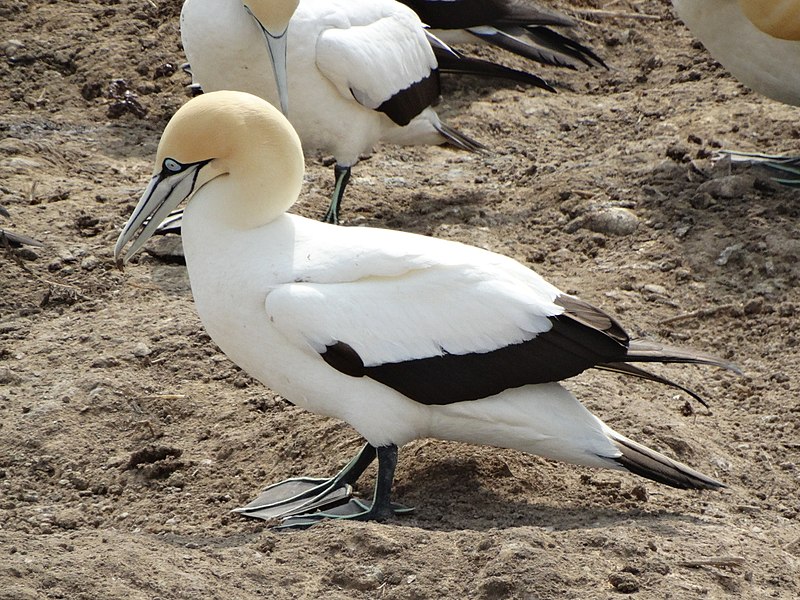
The Cape Gannet is a majestic seabird of the Sulidae family, easily recognised by its large size and striking black-and-white plumage.
Its head and hind neck are strikingly yellow while its pale blue bill is pointed with fine serrations near the tip.
These birds are renowned for their incredible diving abilities; they can plunge up to 25 metres underwater at speeds of over 60 kilometres per hour in pursuit of fish.
The gannets also work together as teams when fishing, creating impressive “bait balls” which draw shoals closer before being devoured.
Their diets mainly consist on small schooling fish such as sardines or anchovies but squid and crustaceans may also be eaten from time to time.
At sea, these remarkable creatures make an unforgettable sight – soaring gracefully above the waves or plunging beneath them in search of food.Scientific classification:
| Kingdom | Animalia |
| Phylum | Chordata |
| Class | Aves |
| Order | Suliformes |
| Family | Sulidae |
| Genus | Morus |
| Species | M. capensis |